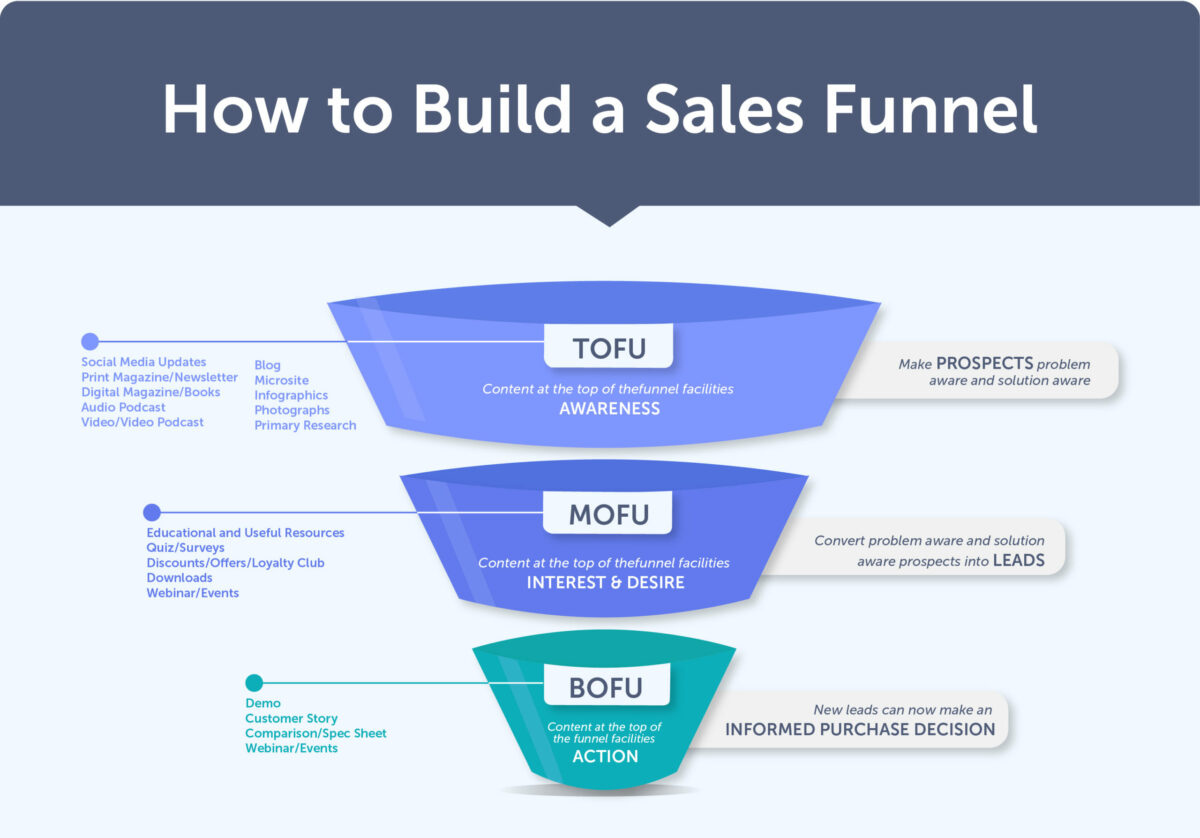Introduction: In the world of sales and marketing, a sales funnel is a crucial framework that guides potential customers through the journey from awareness to purchase. It’s a visual representation of the customer’s path, illustrating the stages they go through before making a buying decision. By understanding and optimizing each stage of the sales funnel, businesses can effectively nurture leads, build relationships, and ultimately drive conversions. In this comprehensive guide, we’ll explore the essential steps, strategies, and best practices involved in developing a sales funnel that maximizes conversion rates and boosts revenue.
- Understand the Sales Funnel Concept:
- Define what a sales funnel is and why it’s important for businesses.
- Understand the stages of the sales funnel: Awareness, Interest, Consideration, Intent, and Purchase.
- Recognize that not all leads will progress through the entire funnel, and that’s okay.
- Identify Your Target Audience:
- Define your ideal customer persona based on demographics, psychographics, and buying behaviors.
- Conduct market research to understand your target audience’s pain points, needs, and preferences.
- Segment your audience based on different criteria to tailor your messaging and offers.
- Create Compelling Content for Each Stage:
- Develop content that resonates with your target audience at each stage of the sales funnel.
- At the Awareness stage, focus on educational content that addresses common pain points and challenges.
- At the Interest stage, provide valuable information that showcases your expertise and positions your brand as a solution.
- At the Consideration stage, present case studies, testimonials, and product demonstrations to help prospects evaluate your offering.
- At the Intent stage, offer incentives such as discounts, free trials, or consultations to encourage conversion.
- At the Purchase stage, streamline the buying process and provide clear calls-to-action to seal the deal.
- Choose the Right Channels and Tactics:
- Select the most effective marketing channels and tactics to reach your target audience at each stage of the sales funnel.
- For the Awareness stage, consider using content marketing, social media, SEO, and guest blogging to attract attention.
- For the Interest stage, engage prospects through email marketing, webinars, podcasts, and online communities.
- For the Consideration stage, leverage retargeting ads, remarketing emails, and personalized content to nurture leads.
- For the Intent stage, use persuasive landing pages, sales calls, and live chat support to guide prospects towards conversion.
- For the Purchase stage, simplify the checkout process, offer multiple payment options, and provide post-purchase support.
- Implement Lead Nurturing and Follow-Up:
- Develop a lead nurturing strategy to stay top-of-mind with prospects and guide them through the sales funnel.
- Use marketing automation tools to send personalized messages, follow-up emails, and targeted offers based on user behavior.
- Segment your leads based on engagement level, purchase intent, and other criteria to deliver relevant content and offers.
- Continuously track and analyze the effectiveness of your lead nurturing efforts and adjust your strategy accordingly.
- Measure and Optimize Performance:
- Set key performance indicators (KPIs) for each stage of the sales funnel, such as conversion rate, lead-to-customer ratio, and average deal size.
- Use analytics tools to track the performance of your sales funnel and identify areas for improvement.
- A/B test different elements of your sales funnel, such as headlines, calls-to-action, and landing page designs, to optimize conversion rates.
- Continuously monitor and refine your sales funnel based on data-driven insights and feedback from customers and prospects.
- Align Sales and Marketing Efforts:
- Foster collaboration between your sales and marketing teams to ensure alignment throughout the sales funnel.
- Share insights, feedback, and data between departments to improve targeting, messaging, and lead quality.
- Establish clear communication channels and processes for handing off leads from marketing to sales and vice versa.
- Provide training and resources to empower both teams to effectively engage prospects and drive conversions.
- Provide Exceptional Customer Experience:
- Focus on delivering a seamless and personalized experience for prospects and customers at every touchpoint.
- Respond promptly to inquiries, address customer concerns, and provide value-added support throughout the buying process.
- Solicit feedback from customers to identify areas for improvement and enhance the overall customer experience.
- Build long-term relationships with customers by staying engaged, providing ongoing value, and exceeding expectations.
Conclusion: Developing a sales funnel is a strategic process that requires careful planning, execution, and optimization. By following the steps outlined in this comprehensive guide and adopting best practices in sales funnel development, businesses can create a framework that guides prospects through the buyer’s journey and drives conversions. Remember to continuously monitor and refine your sales funnel based on data-driven insights and feedback, and adapt your strategy to meet the evolving needs and preferences of your target audience. With a well-developed sales funnel in place, you’ll be better equipped to attract, engage, and convert leads, ultimately driving revenue growth and business success.
